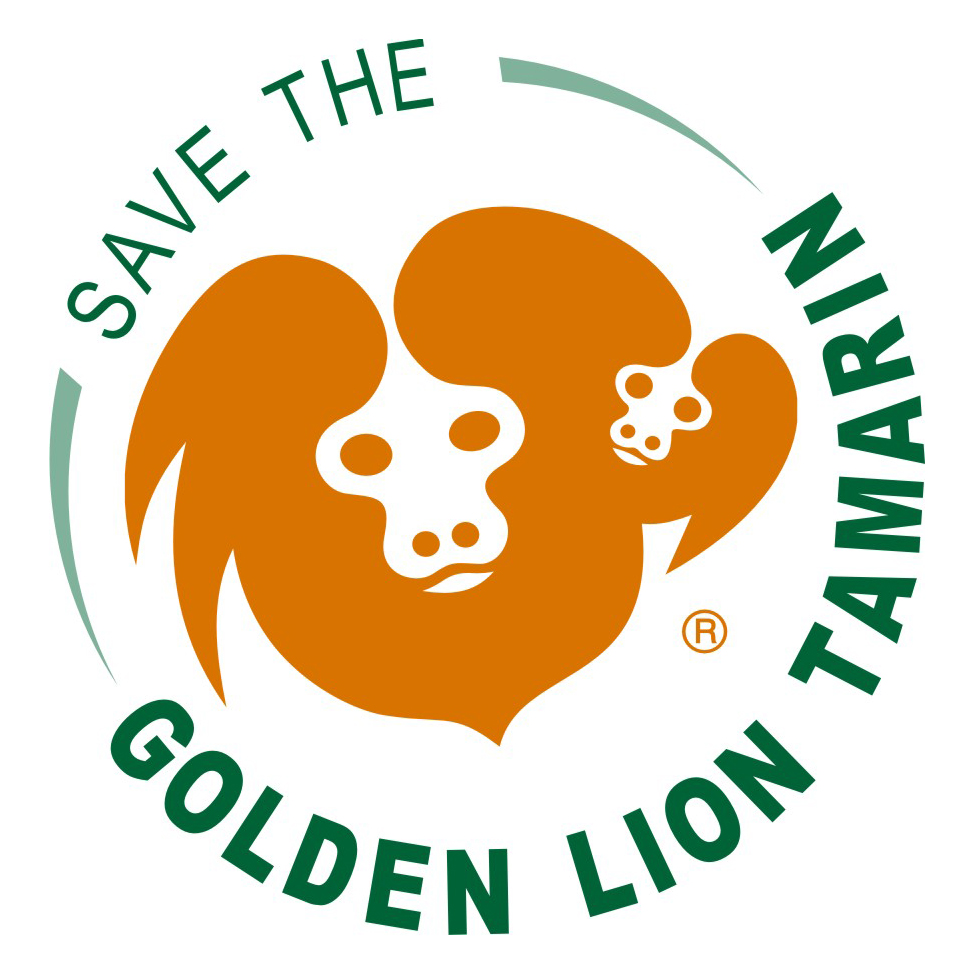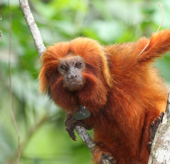Be a GLT Hero.
Tracking Tamarins
What is radio telemetry?
Radio telemetry is a technology that allows Associação Mico-Leão-Dourado (AMLD) biologists to locate tamarins anywhere in their forest homes. A radio telemetry system includes a very small radio transmitter attached to a special lightweight collar that does not inhibit normal activities of GLTs as they scamper about the forest canopy. AMLD biologists attach these collars to 1-2 adult tamarins in each of 15 monitored groups. Each GLT transmitter sends out “beeps” at a unique frequency that can’t be heard by tamarins or humans. The biologists can then use a radio receiver tuned to that frequency and a directional antenna to locate the group safely and quickly. Once the group of GLTs has been located AMLD biologists can follow it all day, recording its location using a hand-held GPS unit (global positioning system).
Why does AMLD use radio telemetry to track GLTs?
Although GLTs are small monkeys, each family lives in a large area of forest. Each group of 5-10 GLTs occupies about 55 hectares (124 acres) of forest, an area of about 85 city blocks! Without the help of telemetry, finding a small monkey in the dense tropical forest would be nearly impossible. AMLD has been using radio telemetry for 30 years to manage and monitor GLTs, and this telemetry is essential for AMLD to accomplish the following activities:
Monitor the health and size of the wild tamarin population: AMLD’s biologists use radio telemetry to locate monitored GLT groups throughout the species range. Once they have located one of these groups, AMLD biologists note the identities of individuals in the group and the size of the group’s home range. Monitoring 15 groups is AMLD’s “finger on the pulse” of the entire wild GLT population.
After the first GLT death from yellow fever was confirmed in early 2018, AMLD biologists conducted a systematic count of remaining GLTs . They do this by walking through the forest playing a recording of a GLT “long call”. If a GLT group is in the area, they respond. When AMLD biologists compared results of this “playback” survey with a similar 2014 survey, they realized that yellow fever had reduced the GLT population by one third.
Detect threats to golden lion tamarins and their forest: Using radio telemetry and direct observations, AMLD biologists follow monitored GLT groups throughout their home ranges. Threats such as signs of hunters, trappers, fire, or deforestation are reported promptly to the Brazilian authorities.
In response to the new threat posed by yellow fever, the AMLD team with help from experts in human and non-human primate disease control developed an action plan to vaccinate the current GLT population and help it grow as quickly as possible. To protect the wild GLTs from future yellow fever outbreaks, AMLD partners have developed a safe and effective vaccine. As soon as necessary permits were received in 2020, AMLD began vaccinating GLT groups and monitoring their progress.
Manage the wild tamarin population: Because some GLT groups are located in forest fragments too small to support them, it’s occasionally necessary to move (translocate) individuals or groups to a new location. Radio telemetry allows AMLD biologists to follow these translocated tamarins, record their progress in their new forest, and help them if necessary.
Ecotourism that provides forest-friendly income for local landowners: Working with local landowners, AMLD offers the opportunity for tourists to see wild golden lion tamarins in privately owned forest. Radio telemetry allows AMLD to quickly and safely find and follow the tamarin groups for the tourists to observe and photograph.
How much does this equipment cost?
It costs about $10,000 a year to provide AMLD biologists with supplies and equipment to track and monitor tamarins in their forest habitat. AMLD uses about 55 radio collars each year. As GLTs are quite small, the transmitter collars must be small and light, and therefore their batteries last only 6 months. Necessary equipment also includes GPS units, and radio telemetry receivers as well as needed supplies including boots, raincoats, packs, watches.
A GLT radio collar (from Holohil System Ltd.), GPS unit, and radio telemetry receiver.
As AMLD begins the effort to vaccinate the wild GLT population against yellow fever, their need for tracking equipment and supplies increases dramatically.
Click here to donate. Be a GLT Hero. Every dollar counts.



